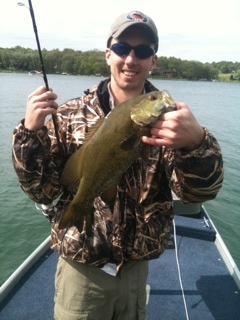
THE WHEN
There is a magical window in the year when the bottom feeders become irresistible bait on most game fish olfactory, taste buds, and minds. This is the time when the crayfish dominates the breakfast, lunch, and dinner menus for everything that swims. Those pricking, pinching, and bass ackwards scooting delicacies become a virtual crack rock to all predatory fish. The evidence is everywhere of what is happening in the crayfish realm. A claw sticking out through the cracks in rocks, molted carcasses strewn about in the rocky shallows, and the already shy crayfish becomes just a little bit more timid.
Mid to late June becomes the window for the soft shell crayfish. Just after spring has finally decided to stop dumping buckets on your head and when you can finally start busting out the bug spray on a more regular basis is about the time to start flipping rocks and setting traps. The end of June every year, crayfish all over the US begins their annual molting. For those of you who aren’t very savvy with the biological process of a crayfish, molting is when the hard exoskeleton of a crayfish is shed leaving a vulnerable, soft bodied crustacean in its wake. They molt to make room for their growing tissue structure.
WHAT THIS MEANS FOR YOU AS THE ANGLER
Typically a crayfish has a pretty impressive, last resort, form of self defense: a set of massive, powerful claws. If fleeing the scene of a predator (or fisherman) doesn’t work, a crayfish will go for broke and flare up it’s claws in a defensive posture. Don’t be fooled by their size, if you are grabbed by these pincers on even a medium sized crayfish, it will draw blood. Trust me. After a crayfish has molted, depending on how long the molting has passed, it can be pretty difficult to tell the difference between a molted and hard crayfish body, so handle with care.
Generally a crayfish will not travel too far from its molten skin, which should give you a clue on areas to look for them. Where you see an empty shell, the soft bodied creature is sure to be lurking nearby. A molten exoskeleton means it’s an opportunity to find a soft shell. Their normally intimidating claws might as well be wet noodles.
Smallmouth bass go to town on these guys. The fish will eat until their guts are full, and sometimes beyond that. It’s not all that uncommon to hook into a bass and see him regurgitate up to 4 or 5 large crayfish. Point blank, it will be darn near impossible for a fish to pass up a soft shelled crayfish with the right presentation. When it comes to using crayfish, there is no imitation bait that can match up to a nervous, scuttling crayfish rigged on a Carolina Rig.
Continue to page 2…


